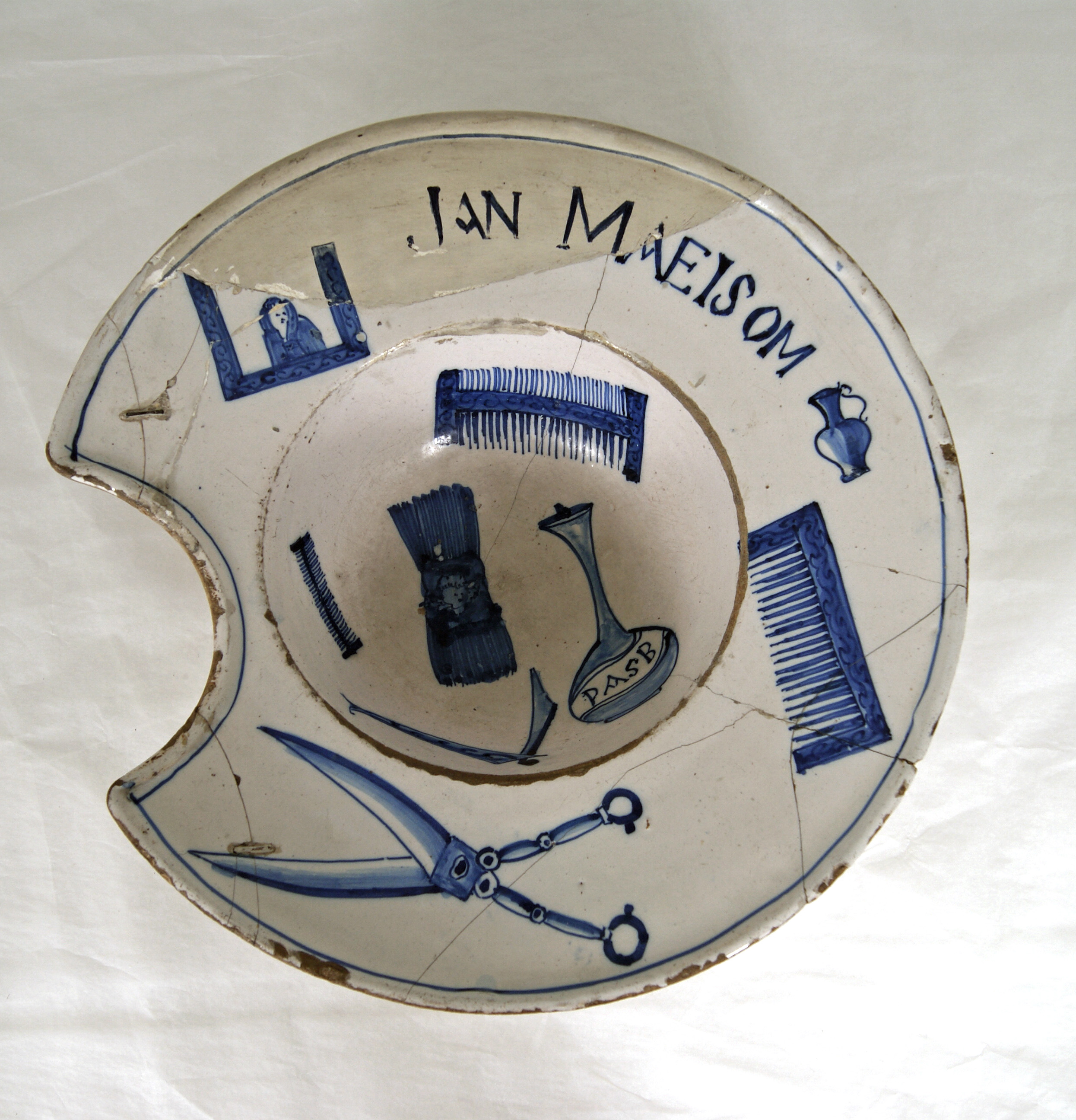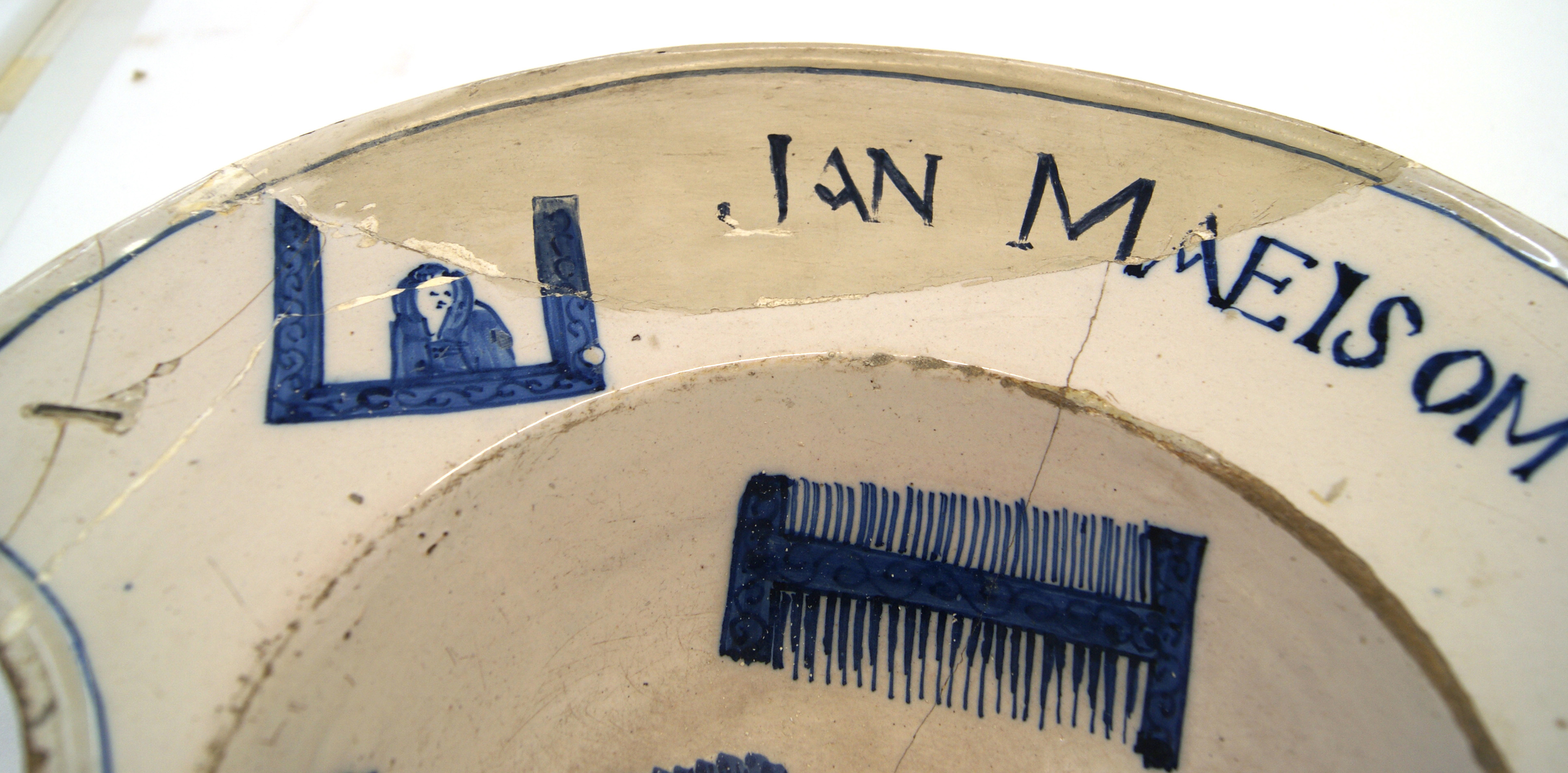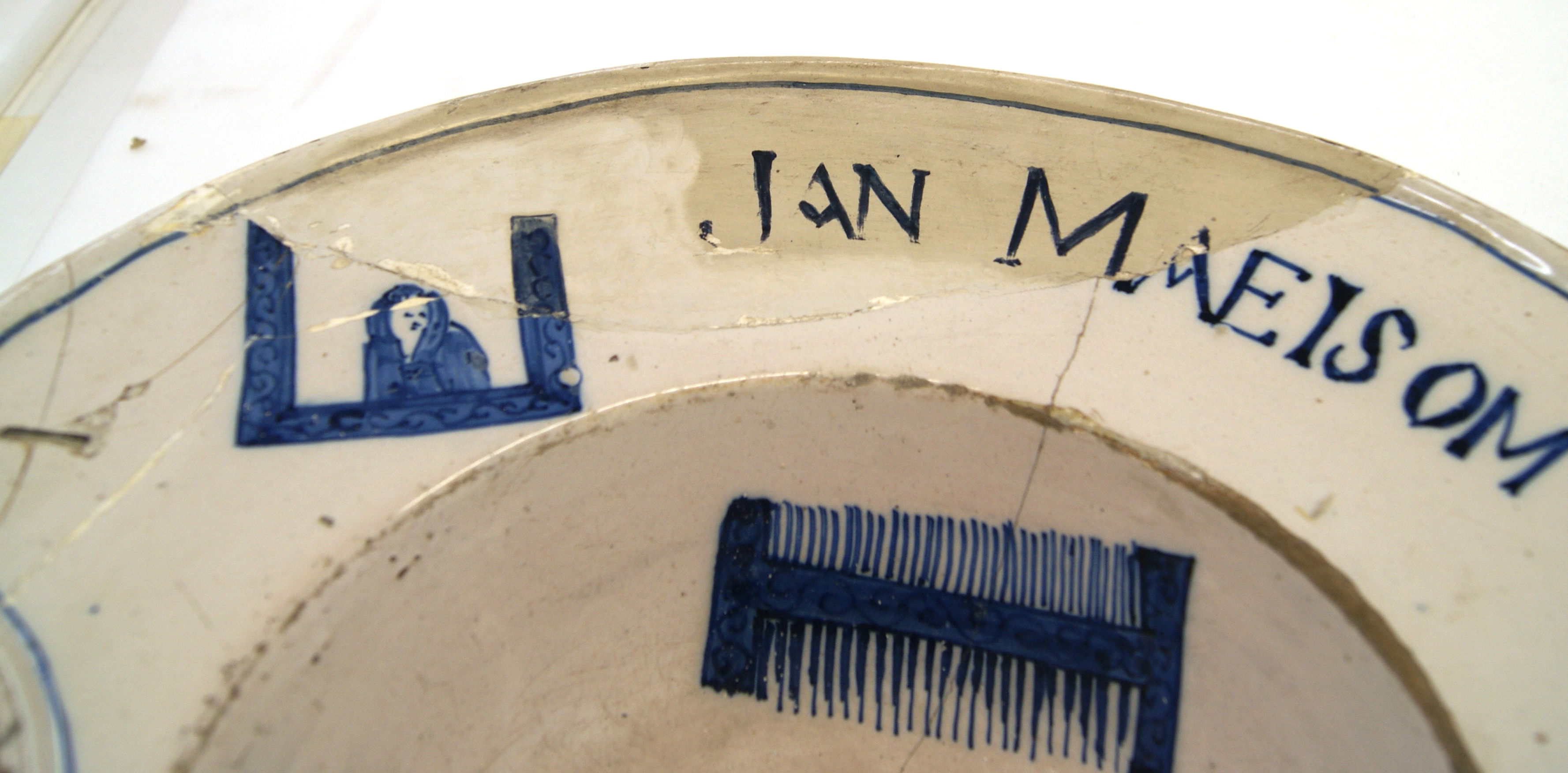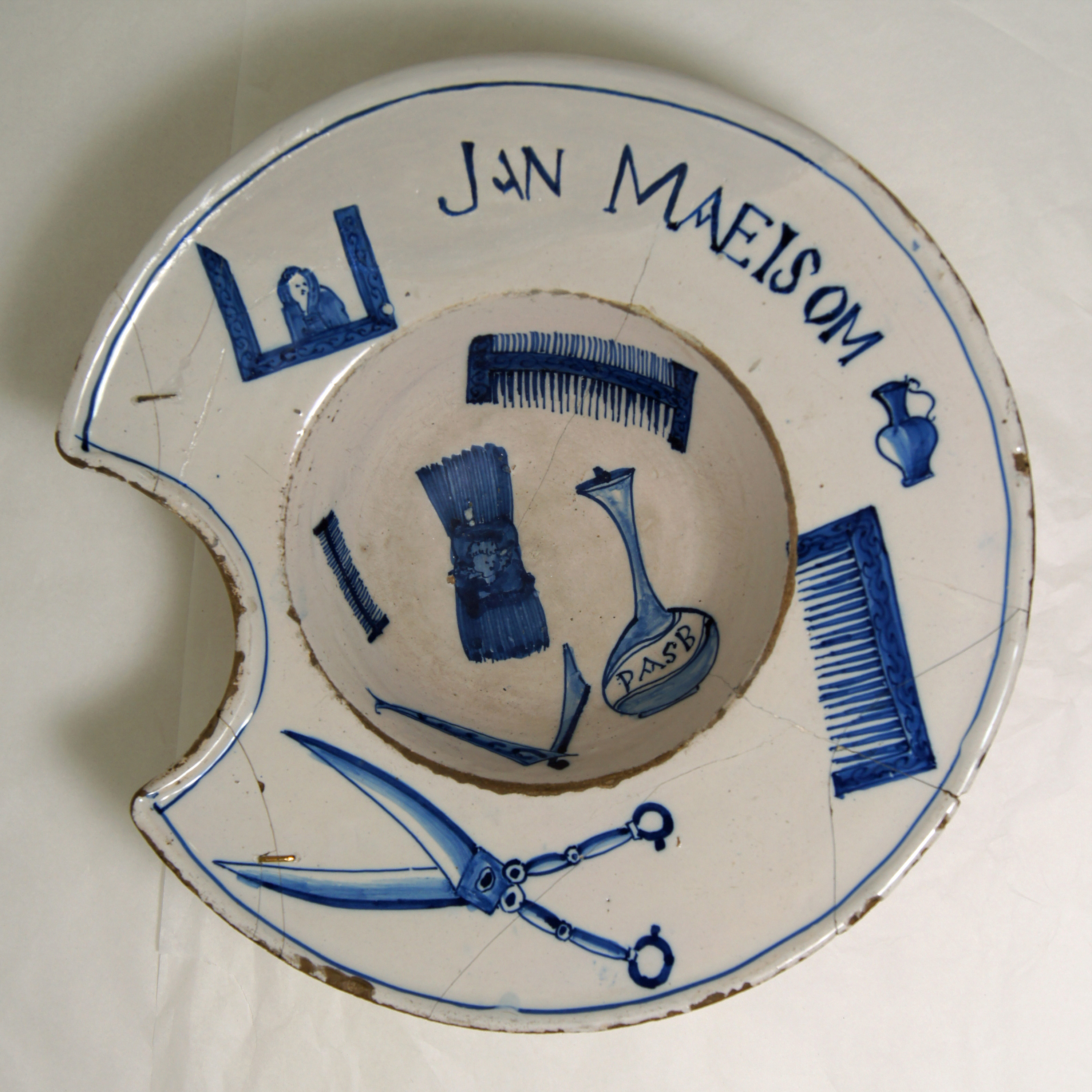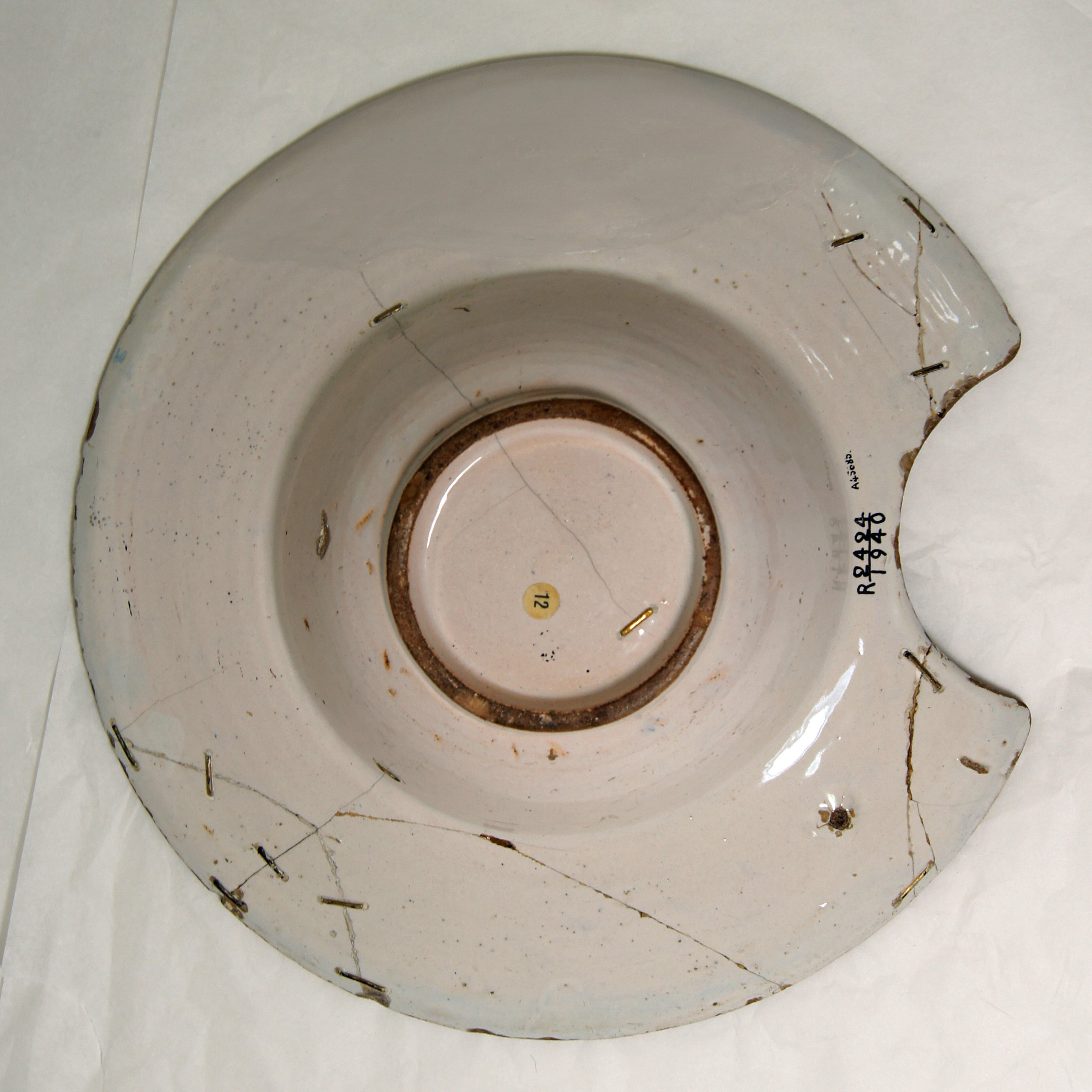Shaving bowls were designed with a semi-circular space, in which the customer could place his chin to minimize the mess made by water and soap. It was also thought that they were used to catch blood during bloodletting, a process believed to cure several ailments.
This bowl will soon join hundreds of other objects on display in the new Medicine Galleries.
Barber’s shaving bowl, decorated with tools of the trade and the owner’s name. Netherlands 1701-1750.
The bowl had been broken in the past. It was repaired using an old conservation technique, involving stapling the fragments back together. A large missing section was filled with plaster, painted and glazed. Other areas, where the original ceramic glaze was chipped, were painted over to hide imperfections. Over time, the repair had aged and significantly yellowed.
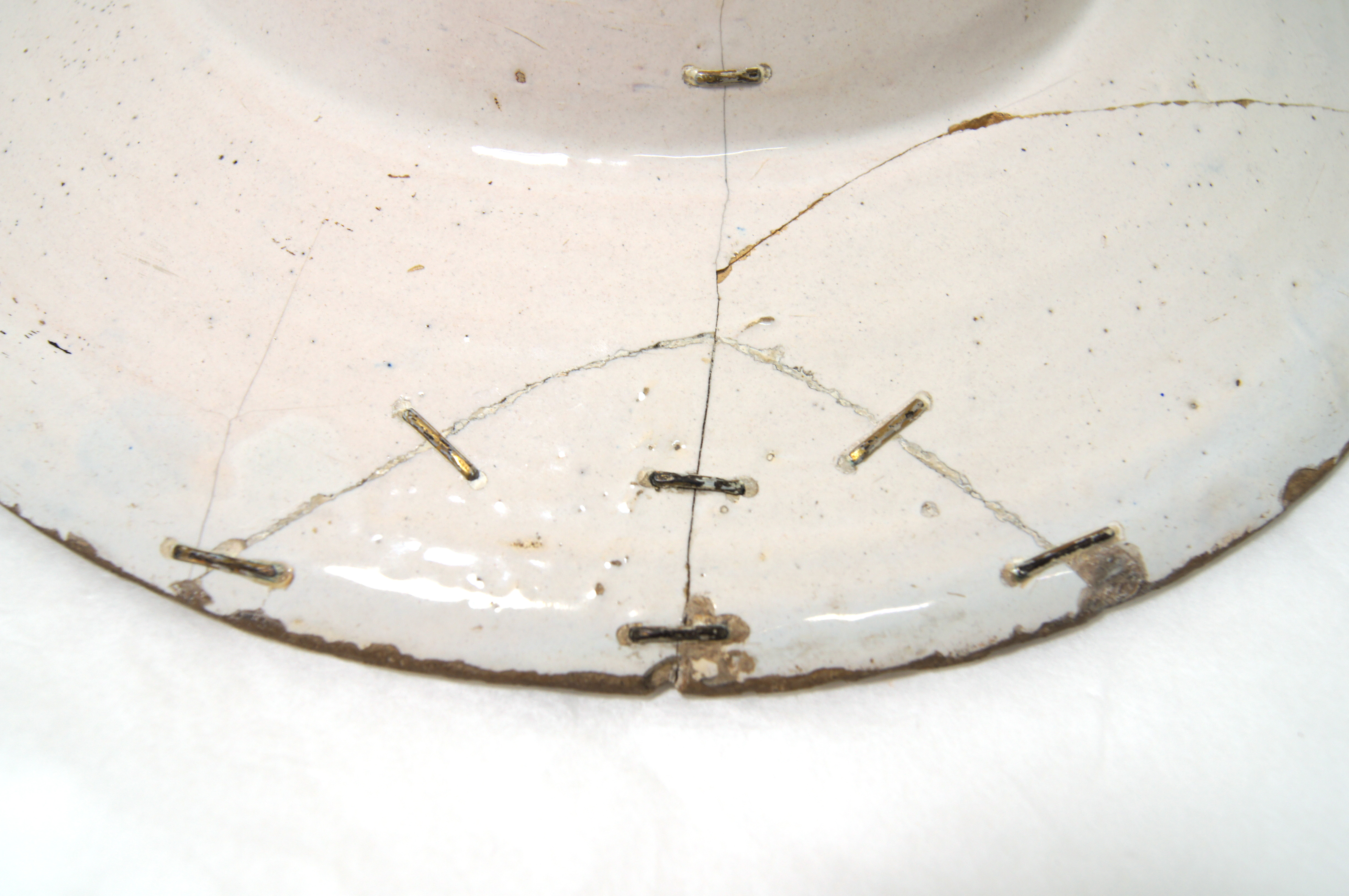
My conservation treatment aimed to minimize the appearance of the old repairs, without removing them entirely. Repairs become part of the object’s history, and our goal is not to hide them, but to ensure that the overall focus remains on the object itself.
I began by cleaning the overall surface to remove dust and excess overpaint. I assessed all the joins to ensure that they were stable and consolidated these where necessary.
I then focused on improving the filled area. This involved removing the yellowed glaze, while leaving the underlying paint layer intact. Any voids between the bowl and plaster fragment were supported by the addition of filler to ensure the join remained stable.
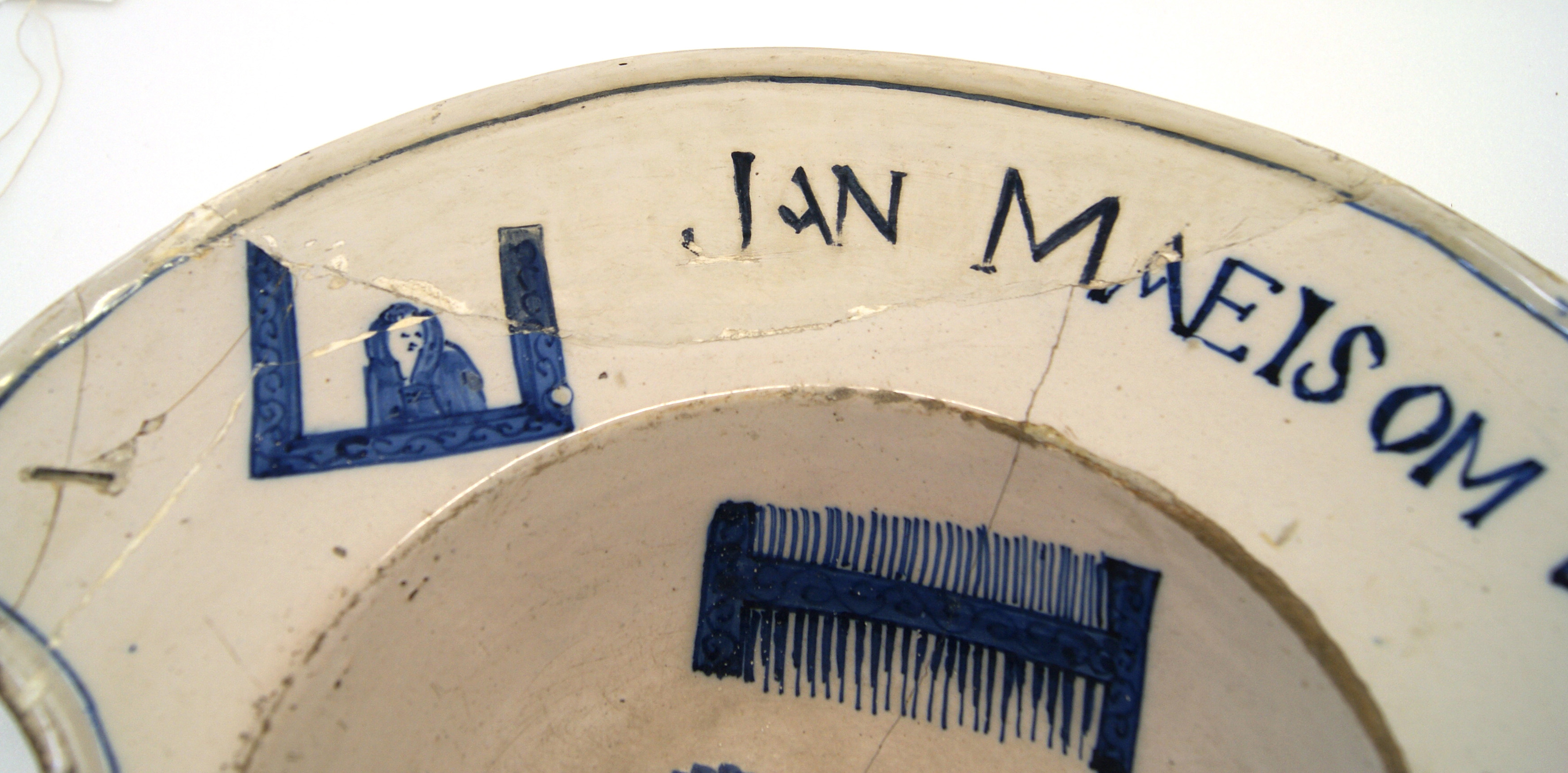
This series of images shows removal of the yellowed glaze.
To even out the existing paint layer and the newly filled areas, I applied thin coats of paint colour-matched to the original surface. Colour matching involves mixing various pigments to attain the correct colour, which isn’t as straightforward and simple as applying paint straight from a tube!
The end result:
As good as new…ly repaired.
Stay tuned for more behind the scenes stories about our upcoming Medicine Galleries.
